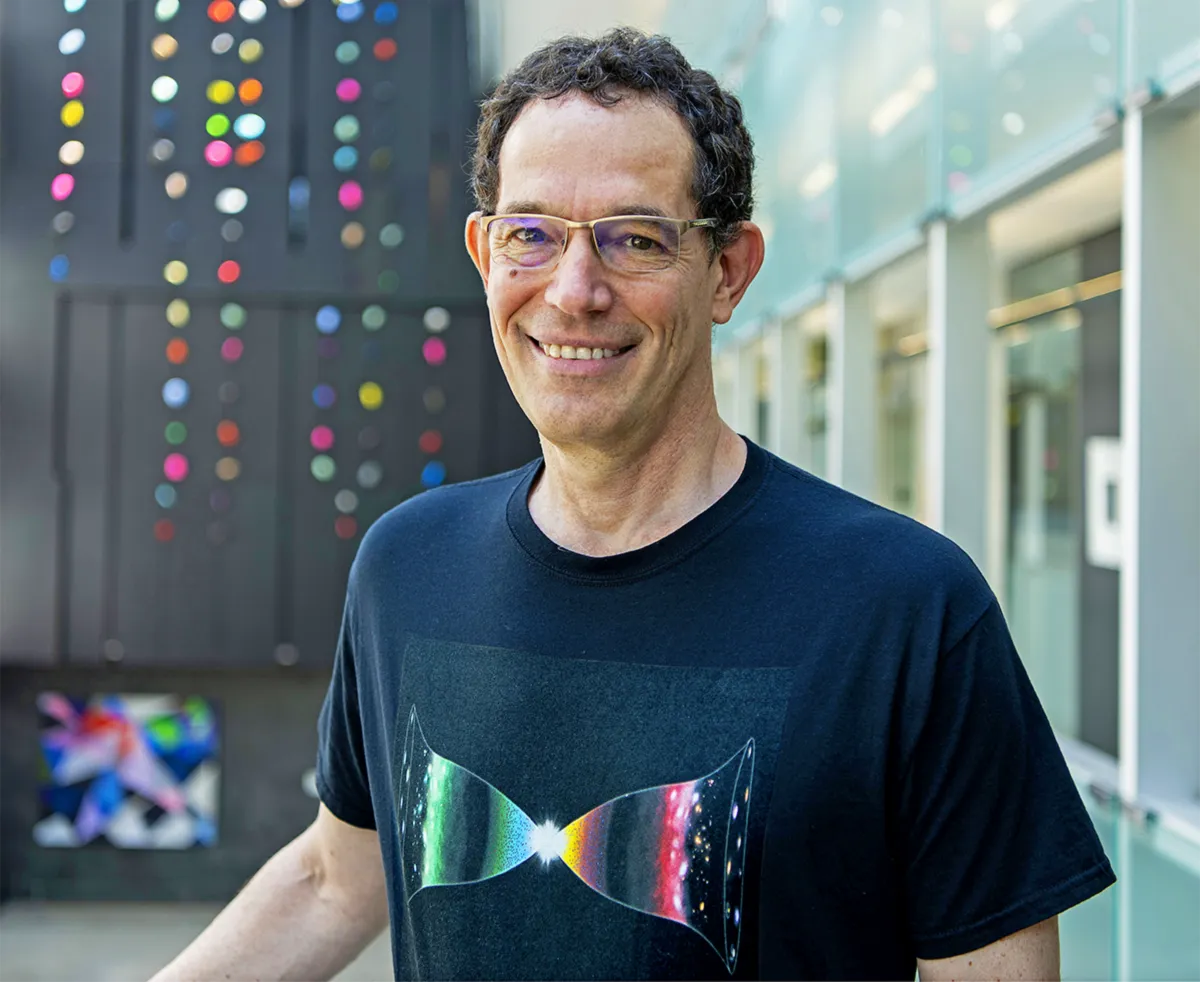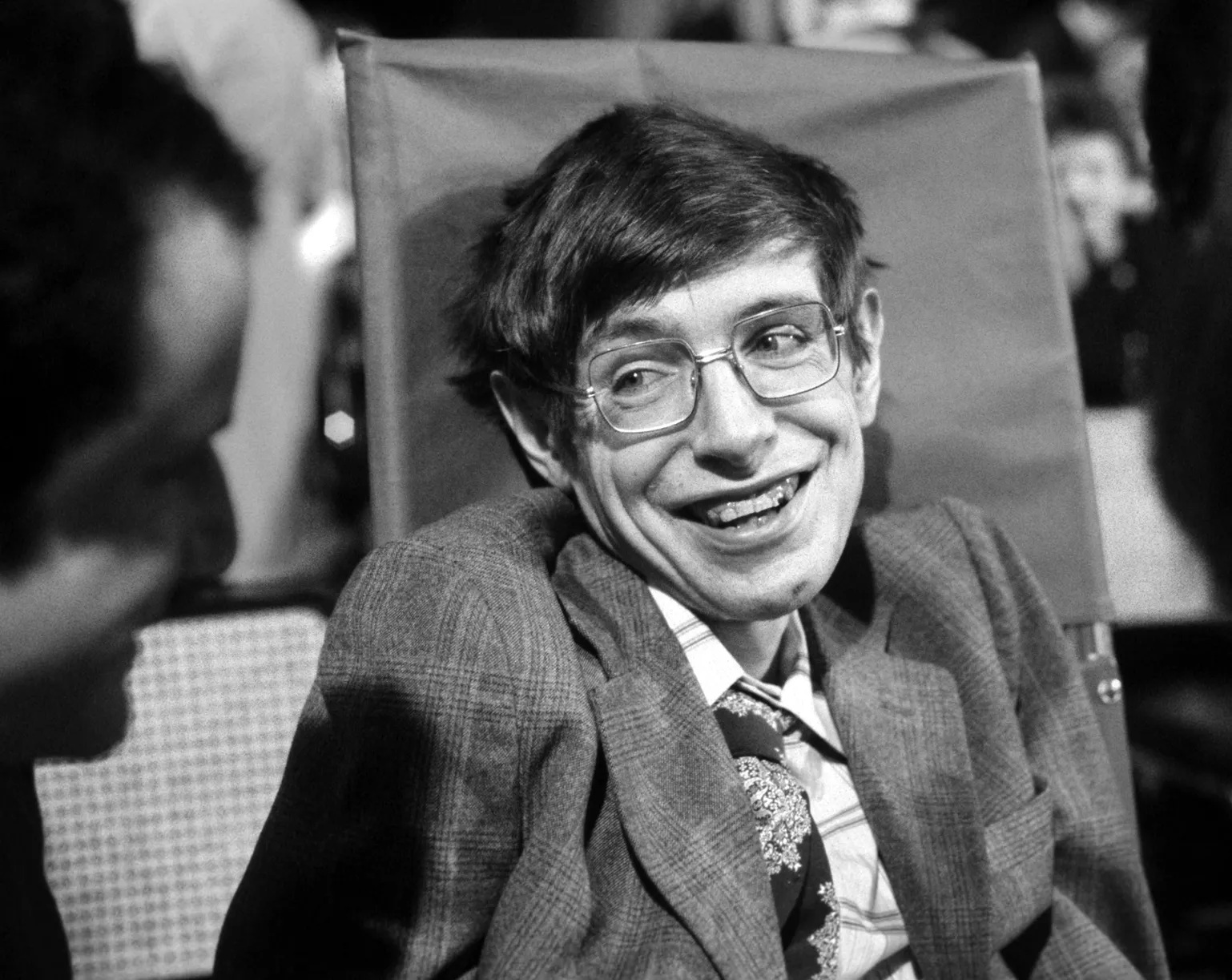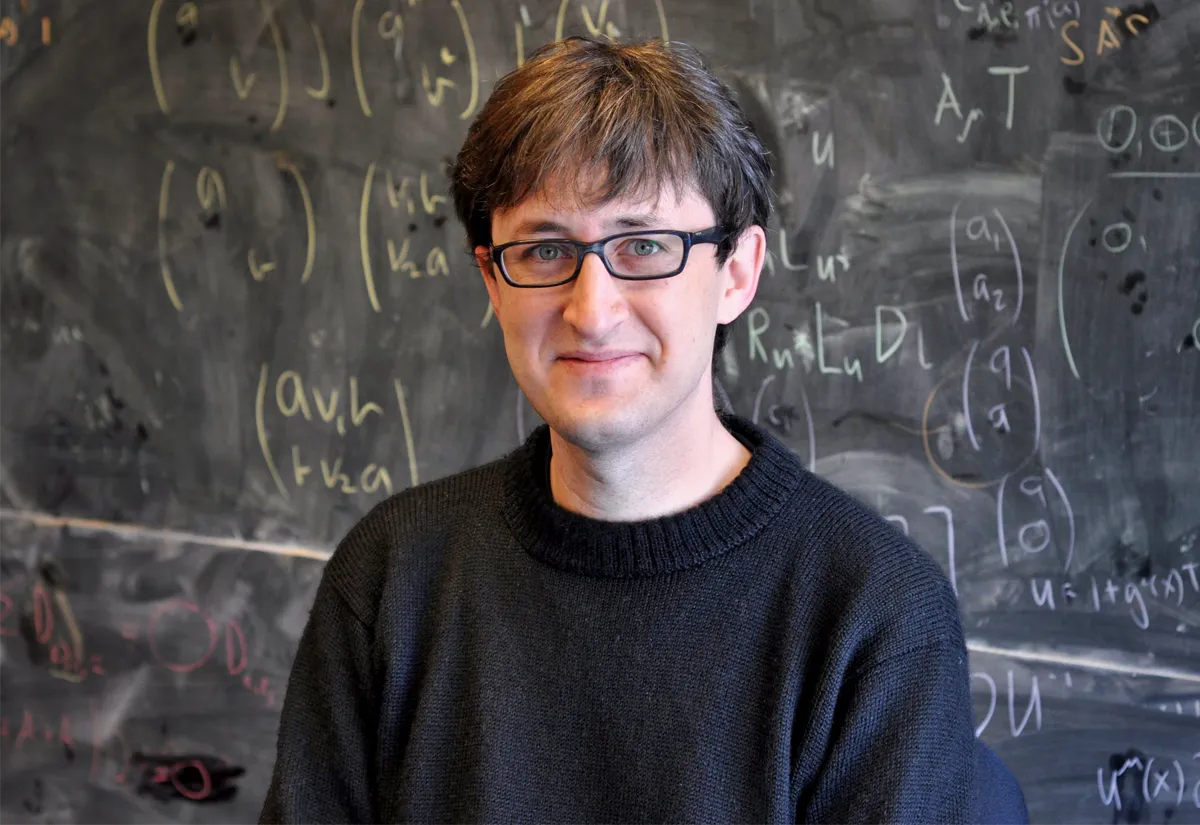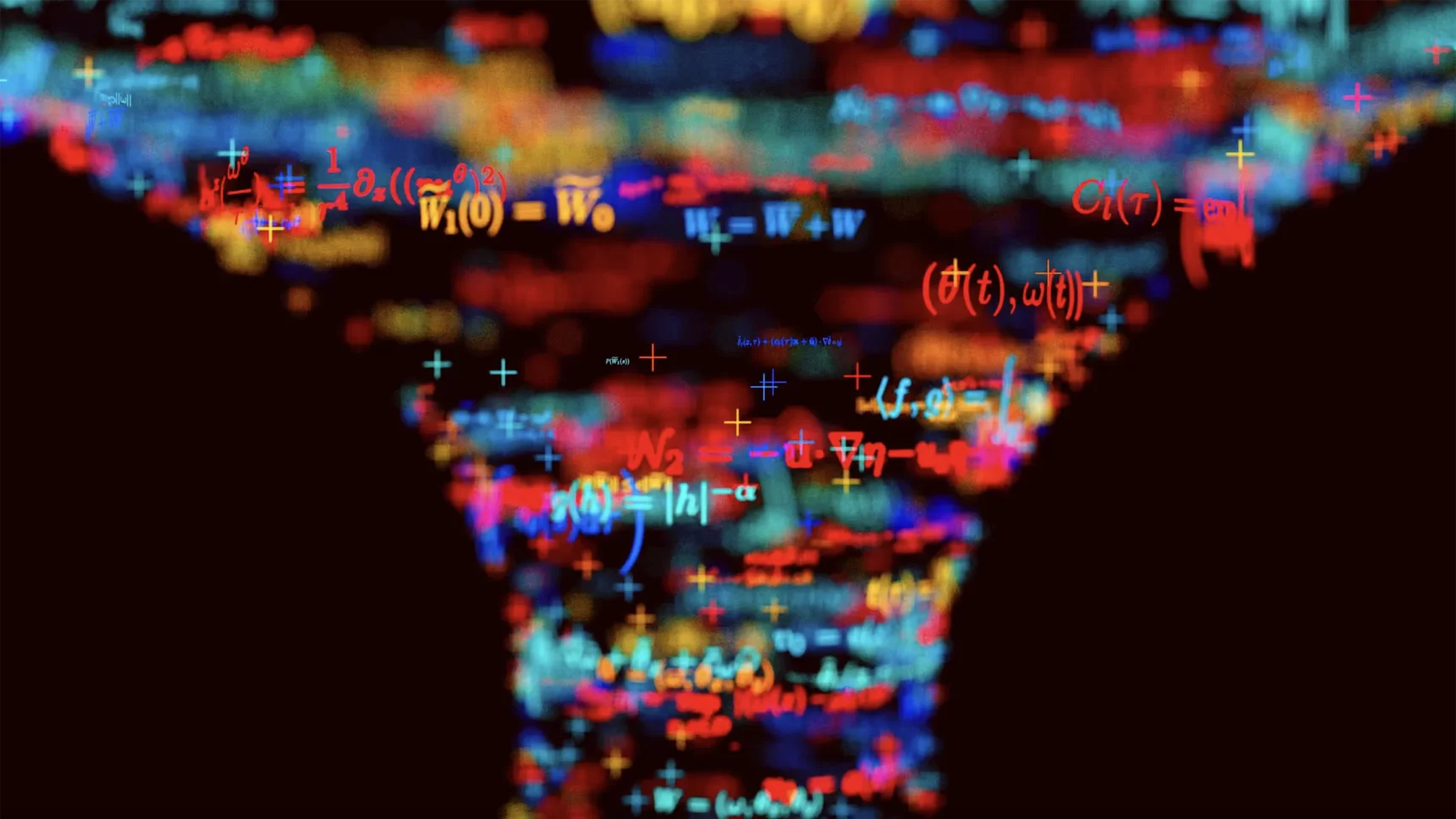Why This Universe? A New Calculation Suggests Our Cosmos Is Typical.

The properties of our universe — smooth, flat, just a pinch of dark energy — are what we should expect to see, according to a new calculation.
Kouzou Sakai for Quanta Magazine
Introduction
Cosmologists have spent decades striving to understand why our universe is so stunningly vanilla. Not only is it smooth and flat as far as we can see, but it’s also expanding at an ever-so-slowly increasing pace, when naïve calculations suggest that — coming out of the Big Bang — space should have become crumpled up by gravity and blasted apart by repulsive dark energy.
To explain the cosmos’s flatness, physicists have added a dramatic opening chapter to cosmic history: They propose that space rapidly inflated like a balloon at the start of the Big Bang, ironing out any curvature. And to explain the gentle growth of space following that initial spell of inflation, some have argued that our universe is just one among many less hospitable universes in a giant multiverse.
But now, two physicists have turned the conventional thinking about our vanilla universe on its head. Following a line of research started by Stephen Hawking and Gary Gibbons in 1977, the duo has published a new calculation suggesting that the plainness of the cosmos is expected, rather than rare. Our universe is the way it is, according to Neil Turok of the University of Edinburgh and Latham Boyle of the Perimeter Institute for Theoretical Physics in Waterloo, Canada, for the same reason that air spreads evenly throughout a room: Weirder options are conceivable, but exceedingly improbable.
The universe “may seem extremely fine-tuned, extremely unlikely, but [they’re] saying, ‘Wait a minute, it’s the favored one,’” said Thomas Hertog, a cosmologist at the Catholic University of Leuven in Belgium.
“It’s a novel contribution that uses different methods compared to what most people have been doing,” said Steffen Gielen, a cosmologist at the University of Sheffield in the United Kingdom.
The provocative conclusion rests on a mathematical trick involving switching to a clock that ticks with imaginary numbers. Using the imaginary clock, as Hawking did in the ’70s, Turok and Boyle could calculate a quantity, known as entropy, that appears to correspond to our universe. But the imaginary time trick is a roundabout way of calculating entropy, and without a more rigorous method, the meaning of the quantity remains hotly debated. While physicists puzzle over the correct interpretation of the entropy calculation, many view it as a new guidepost on the road to the fundamental, quantum nature of space and time.
“Somehow,” Gielen said, “it’s giving us a window into perhaps seeing the microstructure of space-time.”
Imaginary Paths
Turok and Boyle, frequent collaborators, are renowned for devising creative and unorthodox ideas about cosmology. Last year, to study how likely our universe may be, they turned to a technique developed in the 1940s by the physicist Richard Feynman.
Aiming to capture the probabilistic behavior of particles, Feynman imagined that a particle explores all possible routes linking start to finish: a straight line, a curve, a loop, ad infinitum. He devised a way to give each path a number related to its likelihood and add all the numbers up. This “path integral” technique became a powerful framework for predicting how any quantum system would most likely behave.
As soon as Feynman started publicizing the path integral, physicists spotted a curious connection with thermodynamics, the venerable science of temperature and energy. It was this bridge between quantum theory and thermodynamics that enabled Turok and Boyle’s calculation.

The South African physicist and cosmologist Neil Turok is a professor at the University of Edinburgh.
Gabriela Secara/Perimeter Institute
Thermodynamics leverages the power of statistics so that you can use just a few numbers to describe a system of many parts, such as the gajillion air molecules rattling around in a room. Temperature, for instance — essentially the average speed of air molecules — gives a rough sense of the room’s energy. Overall properties like temperature and pressure describe a “macrostate” of the room.
But a macrostate is a crude account; air molecules can be arranged in a tremendous number of ways that all correspond to the same macrostate. Nudge one oxygen atom a bit to the left, and the temperature won’t budge. Each unique microscopic configuration is known as a microstate, and the number of microstates corresponding to a given macrostate determines its entropy.
Entropy gives physicists a sharp way of comparing the odds of different outcomes: The higher the entropy of a macrostate, the more likely it is. There are vastly more ways for air molecules to arrange themselves throughout the whole room than if they’re bunched up in a corner, for instance. As a result, one expects air molecules to spread out (and stay spread out). The self-evident truth that probable outcomes are probable, couched in the language of physics, becomes the famous second law of thermodynamics: that the total entropy of a system tends to grow.
The resemblance to the path integral was unmistakable: In thermodynamics, you add up all possible configurations of a system. And with the path integral, you add up all possible paths a system can take. There’s just one rather glaring distinction: Thermodynamics deals in probabilities, which are positive numbers that straightforwardly add together. But in the path integral, the number assigned to each path is complex, meaning that it involves the imaginary number i, the square root of −1. Complex numbers can grow or shrink when added together — allowing them to capture the wavelike nature of quantum particles, which can combine or cancel out.
Yet physicists found that a simple transformation can take you from one realm to the other. Make time imaginary (a move known as a Wick rotation after the Italian physicist Gian Carlo Wick), and a second i enters the path integral that snuffs out the first one, turning imaginary numbers into real probabilities. Replace the time variable with the inverse of temperature, and you get a well-known thermodynamic equation.
This Wick trick led to a blockbuster finding by Hawking and Gibbons in 1977, at the end of a whirlwind series of theoretical discoveries about space and time.
The Entropy of Space-Time
Decades earlier, Einstein’s general theory of relativity had revealed that space and time together form a unified fabric of reality — space-time — and that the force of gravity is really the tendency for objects to follow the folds in space-time. In extreme circumstances, space-time can curve steeply enough to create an inescapable Alcatraz known as a black hole.
In 1973, Jacob Bekenstein advanced the heresy that black holes are imperfect cosmic prisons. He reasoned that the abysses should absorb the entropy of their meals, rather than deleting that entropy from the universe and violating the second law of thermodynamics. But if black holes have entropy, they must also have temperatures and must radiate heat.
A skeptical Stephen Hawking tried to prove Bekenstein wrong, embarking on an intricate calculation of how quantum particles behave in the curved space-time of a black hole. To his surprise, in 1974 he found that black holes do indeed radiate. Another calculation confirmed Bekenstein’s guess: A black hole has entropy equal to one-quarter the area of its event horizon — the point of no return for an infalling object.

The late British physicist Stephen Hawking, pictured in 1979 in Princeton, New Jersey.
Santi Visalli/Getty Images
In the years that followed, the British physicists Gibbons and Malcolm Perry, and later Gibbons and Hawking, arrived at the same result from another direction. They set up a path integral, in principle adding up all the different ways space-time might bend to make a black hole. Next, they Wick-rotated the black hole, marking the flow of time with imaginary numbers, and scrutinized its shape. They discovered that, in the imaginary time direction, the black hole periodically returned to its initial state. This Groundhog Day-like repetition in imaginary time gave the black hole a sort of stasis that allowed them to calculate its temperature and entropy.
They might not have trusted the results if the answers had not precisely matched those calculated earlier by Bekenstein and Hawking. By the end of the decade, their collective work had yielded a startling notion: The entropy of black holes implied that space-time itself is made of tiny, rearrangeable pieces, much as air is made of molecules. And miraculously, even without knowing what these “gravitational atoms” were, physicists could count their arrangements by looking at a black hole in imaginary time.
“It’s that result which left a deep, deep impression on Hawking,” said Hertog, Hawking’s former graduate student and longtime collaborator. Hawking immediately wondered if the Wick rotation would work for more than just black holes. “If that geometry captures a quantum property of a black hole,” Hertog said, “then it’s irresistible to do the same with the cosmological properties of the whole universe.”
Counting All Possible Universes
Right away, Hawking and Gibbons Wick-rotated one of the simplest imaginable universes — one containing nothing but the dark energy built into space itself. This empty, expanding universe, called a “de Sitter” space-time, has a horizon, beyond which space expands so quickly that no signal from there will ever reach an observer in the center of the space. In 1977, Gibbons and Hawking calculated that, like a black hole, a de Sitter universe also has an entropy equal to one-fourth its horizon’s area. Again, space-time seemed to have a countable number of microstates.
But the entropy of the actual universe remained an open question. Our universe is not empty; it brims with radiating light and streams of galaxies and dark matter. Light drove a brisk expansion of space during the universe’s youth, then the gravitational attraction of matter slowed things to a crawl during cosmic adolescence. Now dark energy appears have taken over, driving a runaway expansion. “That expansion history is a bumpy ride,” Hertog said. “To get an explicit solution is not so easy.”
Over the last year or so, Boyle and Turok have built just such an explicit solution. First, in January, while playing with toy cosmologies, they noticed that adding radiation to de Sitter space-time didn’t spoil the simplicity required to Wick-rotate the universe.
Then over the summer they discovered that the technique would withstand even the messy inclusion of matter. The mathematical curve describing the more complicated expansion history still fell into a particular group of easy-to-handle functions, and the world of thermodynamics remained accessible. “This Wick rotation is murky business when you move away from very symmetric space-time,” said Guilherme Leite Pimentel, a cosmologist at the Scuola Normale Superiore in Pisa, Italy. “But they managed to find it.”
By Wick-rotating the roller-coaster expansion history of a more realistic class of universes, they got a more versatile equation for cosmic entropy. For a wide range of cosmic macrostates defined by radiation, matter, curvature and a dark energy density (much as a range of temperatures and pressures define different possible environments of a room), the formula spits out the number of corresponding microstates. Turok and Boyle posted their results online in early October.

Latham Boyle, a physicist and cosmologist at the Perimeter Institute for Theoretical Physics, coauthored a new calculation about the relative likelihoods of different universes.
Gabriela Secara/Perimeter Institute
Experts have praised the explicit, quantitative result. But from their entropy equation, Boyle and Turok have drawn an unconventional conclusion about the nature of our universe. “That’s where it becomes a little more interesting, and a little more controversial,” Hertog said.
Boyle and Turok believe the equation conducts a census of all conceivable cosmic histories. Just as a room’s entropy counts all the ways of arranging the air molecules for a given temperature, they suspect their entropy counts all the ways one might jumble up the atoms of space-time and still end up with a universe with a given overall history, curvature and dark energy density.
Boyle likens the process to surveying a gigantic sack of marbles, each a different universe. Those with negative curvature might be green. Those with tons of dark energy might be cat’s-eyes, and so on. Their census reveals that the overwhelming majority of the marbles have just one color — blue, say — corresponding to one type of universe: one broadly like our own, with no appreciable curvature and just a touch of dark energy. Weirder types of cosmos are vanishingly rare. In other words, the strangely vanilla features of our universe that have motivated decades of theorizing about cosmic inflation and the multiverse may not be strange at all.
“It’s a very intriguing result,” Hertog said. But “it raises more questions than it answers.”
Counting Confusion
Boyle and Turok have calculated an equation that counts universes. And they’ve made the striking observation that universes like ours seem to account for the lion’s share of the conceivable cosmic options. But that’s where the certainty ends.
The duo make no attempt to explain what quantum theory of gravity and cosmology might make certain universes common or rare. Nor do they explain how our universe, with its particular configuration of microscopic parts, came into being. Ultimately, they view their calculation as more of a clue to which sorts of universes are preferred than anything close to a full theory of cosmology. “What we’ve used is a cheap trick to get the answer without knowing what the theory is,” Turok said.
Their work also revitalizes a question that has gone unanswered since Gibbons and Hawking first kicked off the whole business of space-time entropy: What exactly are the microstates that the cheap trick is counting?
“The key thing here is to say that we don’t know what that entropy means,” said Henry Maxfield, a physicist at Stanford University who studies quantum theories of gravity.
At its heart, entropy encapsulates ignorance. For a gas made of molecules, for instance, physicists know the temperature — the average speed of particles — but not what every particle is doing; the gas’s entropy reflects the number of options.
After decades of theoretical work, physicists are converging on a similar picture for black holes. Many theorists now believe that the area of the horizon describes their ignorance of the stuff that’s fallen in — all the ways of internally arranging the building blocks of the black hole to match its outward appearance. (Researchers still don’t know what the microstates actually are; ideas include configurations of the particles called gravitons or the strings of string theory.)
But when it comes to the entropy of the universe, physicists feel less certain about where their ignorance even lies.
In April, two theorists attempted to put cosmological entropy on a firmer mathematical footing. Ted Jacobson, a physicist at the University of Maryland renowned for deriving Einstein’s theory of gravity from black hole thermodynamics, and his graduate student Batoul Banihashemi explicitly defined the entropy of a (vacant, expanding) de Sitter universe. They adopted the perspective of an observer at the center. Their technique, which involved adding a fictitious surface between the central observer and the horizon, then shrinking the surface until it reached the central observer and disappeared, recovered the Gibbons and Hawking answer that entropy equals one-quarter of the horizon area. They concluded that the de Sitter entropy counts all possible microstates inside the horizon.
Turok and Boyle calculate the same entropy as Jacobson and Banihashemi for an empty universe. But in their new calculation pertaining to a realistic universe filled with matter and radiation, they get a much larger number of microstates — proportional to volume and not area. Faced with this apparent clash, they speculate that the different entropies answer different questions: The smaller de Sitter entropy counts microstates of pure space-time bounded by a horizon, while they suspect their larger entropy counts all the microstates of a space-time filled with matter and energy, both inside and outside the horizon. “It’s the whole shebang,” Turok said.
Ultimately, settling the question of what Boyle and Turok are counting will require a more explicit mathematical definition of the ensemble of microstates, analogous to what Jacobson and Banihashemi have done for de Sitter space. Banihashemi said she views Boyle and Turok’s entropy calculation “as an answer to a question that is yet to be fully understood.”
As for more established answers to the question “Why this universe?,” cosmologists say inflation and the multiverse are far from dead. Modern inflation theory, in particular, has come to solve more than just the universe’s smoothness and flatness. Observations of the sky match many of its other predictions. Turok and Boyle’s entropic argument has passed a notable first test, Pimentel said, but it will have to nail other, more detailed data to more seriously rival inflation.
As befits a quantity that measures ignorance, mysteries rooted in entropy have served as harbingers of unknown physics before. In the late 1800s, a precise understanding of entropy in terms of microscopic arrangements helped confirm the existence of atoms. Today, the hope is that if the researchers calculating cosmological entropy in different ways can work out exactly what questions they’re answering, those numbers will guide them toward a similar understanding of how Lego bricks of time and space pile up to create the universe that surrounds us.
“What our calculation does is provide huge extra motivation for people who are trying to build microscopic theories of quantum gravity,” Turok said. “Because the prospect is that that theory will ultimately explain the large-scale geometry of the universe.”



